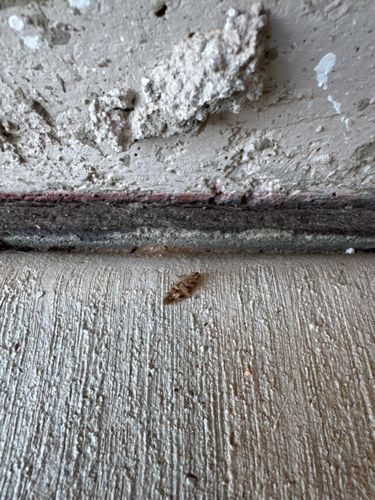Case-bearing Clothes Moth (larva)
Scientific Name: Tinea pellionella
Order & Family: Lepidoptera, Tineidae
Size: Larvae typically grow up to 10-15 mm (0.4-0.6 inches) long, and the case can be similar in length. Adult moths have a wingspan of 9-16 mm (0.35-0.63 inches).

Natural Habitat
Indoors, in dark, undisturbed areas where suitable food sources are available, such as closets, attics, storage chests, and underneath furniture. They prefer humid conditions but can tolerate dry environments.
Diet & Feeding
The larvae feed on materials of animal origin containing keratin, such as wool, fur, feathers, hair, felt, and sometimes silk. They are known household pests, damaging clothing, carpets, and upholstered furniture.
Behavior Patterns
Case-bearing clothes moth larvae construct and live within a silken case, which they enlarge as they grow. They drag this case with them as they move and feed. They are generally slow-moving. Adults are nocturnal and usually avoid light.
Risks & Benefits
The primary risk is economic damage to textiles and other keratin-containing materials in homes and museums. They do not bite or transmit diseases to humans. There are no notable benefits.
Identified on: 8/10/2025